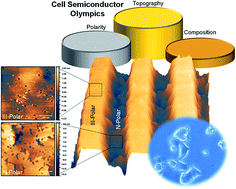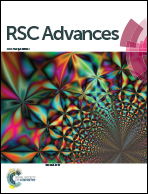Nanoscale topography, semiconductor polarity and surface functionalization: additive and cooperative effects on PC12 cell behavior†
Abstract
This work compares the behavior of PC12 cells on planar and patterned III-nitride materials with nanostructured topographies. Three different materials' compositions containing N-polar and Ga-polar areas are studied: Al0.8Ga0.2N, Al0.7Ga0.3N, and GaN. Surface microscopy and spectroscopy, along with biological assays are used to understand the connection between nanoscopic features, polarity and surface functionalization. All materials are modified using a solution based approach to change their surface composition. The results demonstrate that altering the surface hydrophobicity can be used to generate additive effects with respect to protein adsorption in addition to the cooperative effects observed with respect to planes' polarity and topography. The work also details differences in the release of metal ions from clean and functionalized nanostructured III-polar and N-polar semiconductors in cell culture media, and their relationship to changes in cell response through quantification of cell viability and the production of reactive oxygen species. Our results demonstrate that nanoscale topography can be linked to additional parameters at the cell-semiconductor interface in order to understand and modulate PC12 cell behavior.


 Please wait while we load your content...
Please wait while we load your content...